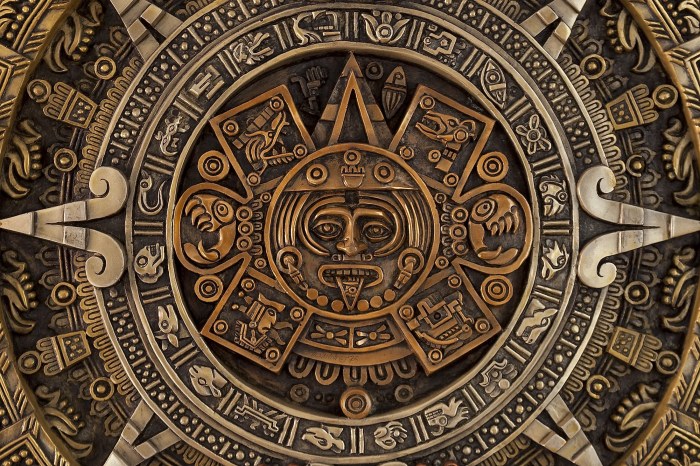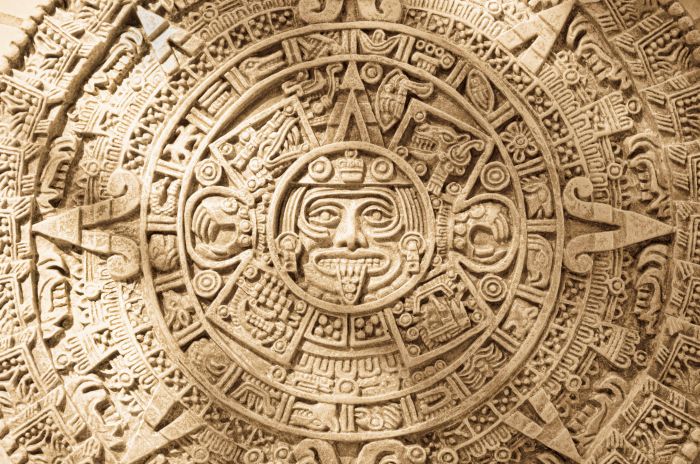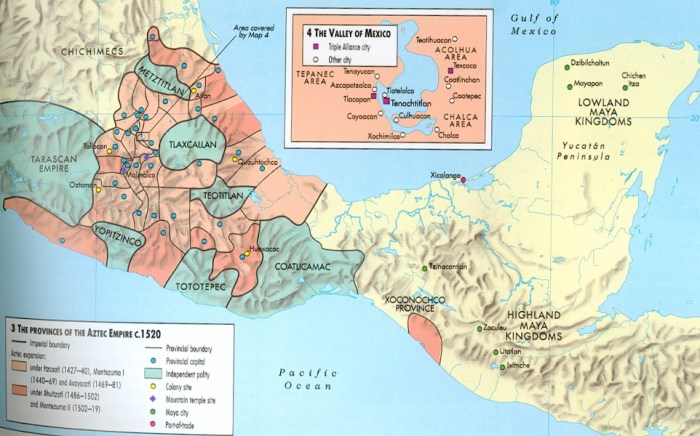The legend of the Aztec empire began with a vision, a pivotal moment that shaped the destiny of an ancient civilization. This enigmatic vision, imbued with symbolism and profound significance, set the Aztecs on a transformative journey that culminated in the establishment of their mighty empire.
The vision, a divine revelation received by a humble priest, depicted an eagle perched upon a cactus, devouring a serpent. This potent imagery ignited within the Aztecs a profound sense of purpose and guided their arduous pilgrimage to Tenochtitlan, the site destined to become the heart of their empire.
The Vision and its Interpretation: The Legend Of The Aztec Empire Began With A Vision

The legend of the Aztec Empire began with a vision. According to Aztec mythology, the god Huitzilopochtli appeared to a wandering Aztec tribe and instructed them to establish a new city in a place where they would see an eagle perched on a cactus devouring a serpent.
The symbolism of the vision was profound. The eagle represented the sun, the cactus represented the earth, and the serpent represented the underworld. The vision thus foretold the rise of a great empire that would dominate the Valley of Mexico.
The Aztecs took the vision to heart and set out to find the promised land. They traveled for many years, facing many challenges and obstacles along the way. But they never gave up hope, and eventually they reached the Valley of Mexico.
The Journey to Tenochtitlan
The journey to Tenochtitlan was long and arduous. The Aztecs had to cross treacherous mountains, dense forests, and vast deserts. They were also attacked by hostile tribes along the way.
But the Aztecs were determined to reach their destination. They believed that the vision of Huitzilopochtli was a sign that they were destined to greatness. And so they pressed on, despite the challenges they faced.
The Founding of Tenochtitlan, The legend of the aztec empire began with a vision
In 1325, the Aztecs finally reached the Valley of Mexico. They found the promised land, a small island in the middle of Lake Texcoco. And there, they founded their new city, Tenochtitlan.
Tenochtitlan was strategically located on an island in the middle of a lake. This gave the Aztecs a natural defense against their enemies. The city also had access to fresh water and fertile land, which allowed the Aztecs to thrive.
The Expansion of the Empire
Under the leadership of their warrior kings, the Aztecs expanded their empire rapidly. They conquered neighboring tribes and formed alliances with others. By the early 16th century, the Aztec Empire controlled most of central Mexico.
The vision of Huitzilopochtli inspired the Aztecs to expand their empire. They believed that they were destined to rule over all of Mexico. And so they fought bravely and conquered all who stood in their way.
The Legacy of the Vision
The vision of Huitzilopochtli had a profound impact on Aztec culture and history. It shaped their beliefs, values, and practices. The Aztecs believed that they were the chosen people of the gods and that they were destined to greatness.
The vision also inspired the Aztecs to create a great empire. They built magnificent cities, developed a complex system of government, and created a rich culture. The Aztec Empire was one of the most powerful and advanced civilizations in the pre-Columbian Americas.
FAQ Section
What was the significance of the eagle in the Aztec vision?
The eagle represented the sun, a powerful deity in Aztec mythology, and its presence in the vision symbolized the divine sanction for the Aztecs to establish their empire.
How did the vision influence the location of Tenochtitlan?
The vision specified that the city should be built on the site where they found an eagle perched on a cactus devouring a serpent, which led them to the marshy island of Tenochtitlan.
What is the legacy of the Aztec vision today?
The vision continues to be a symbol of Aztec identity and heritage, and it is depicted in various forms of art, literature, and historical accounts.

